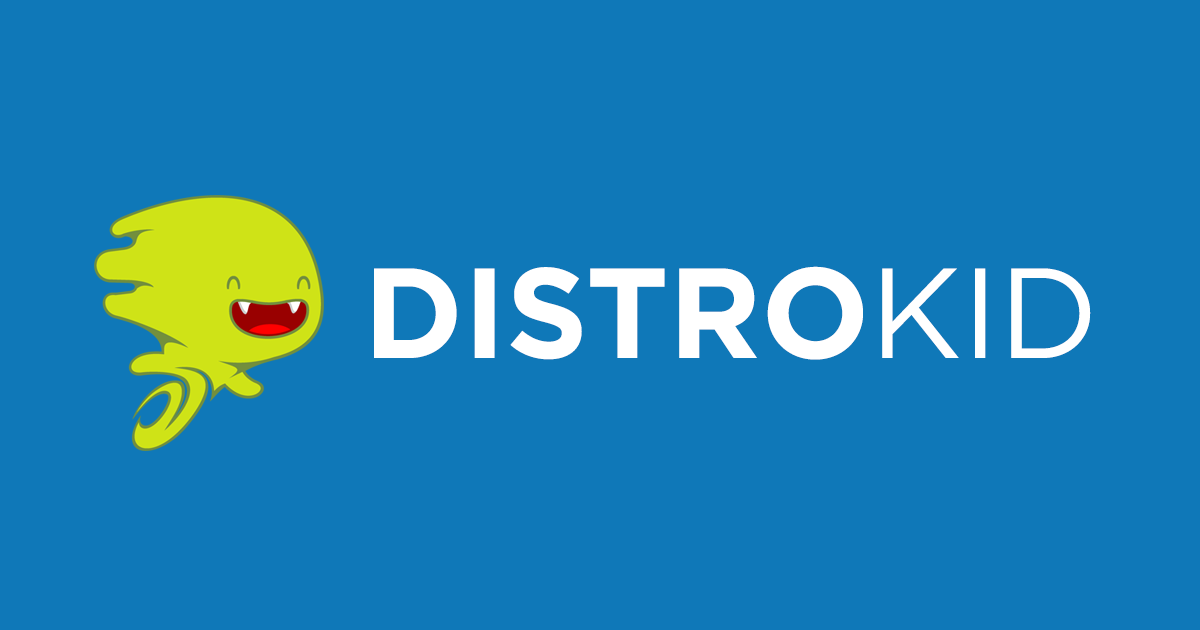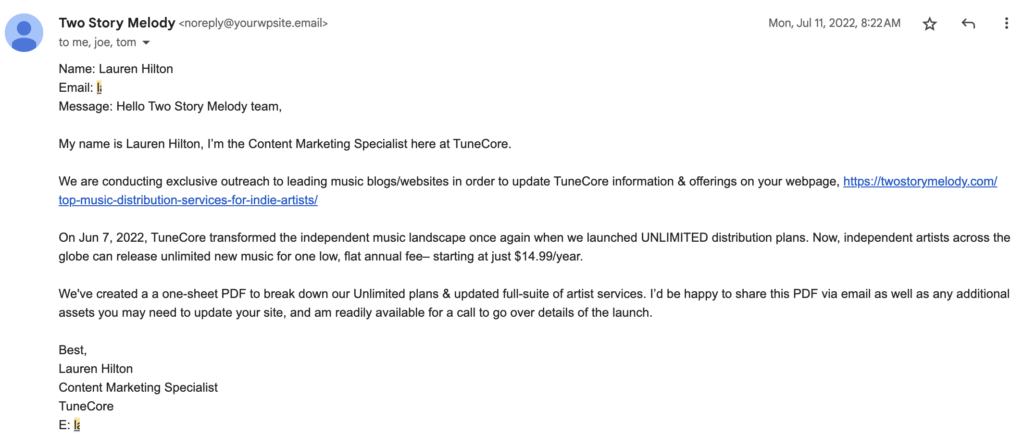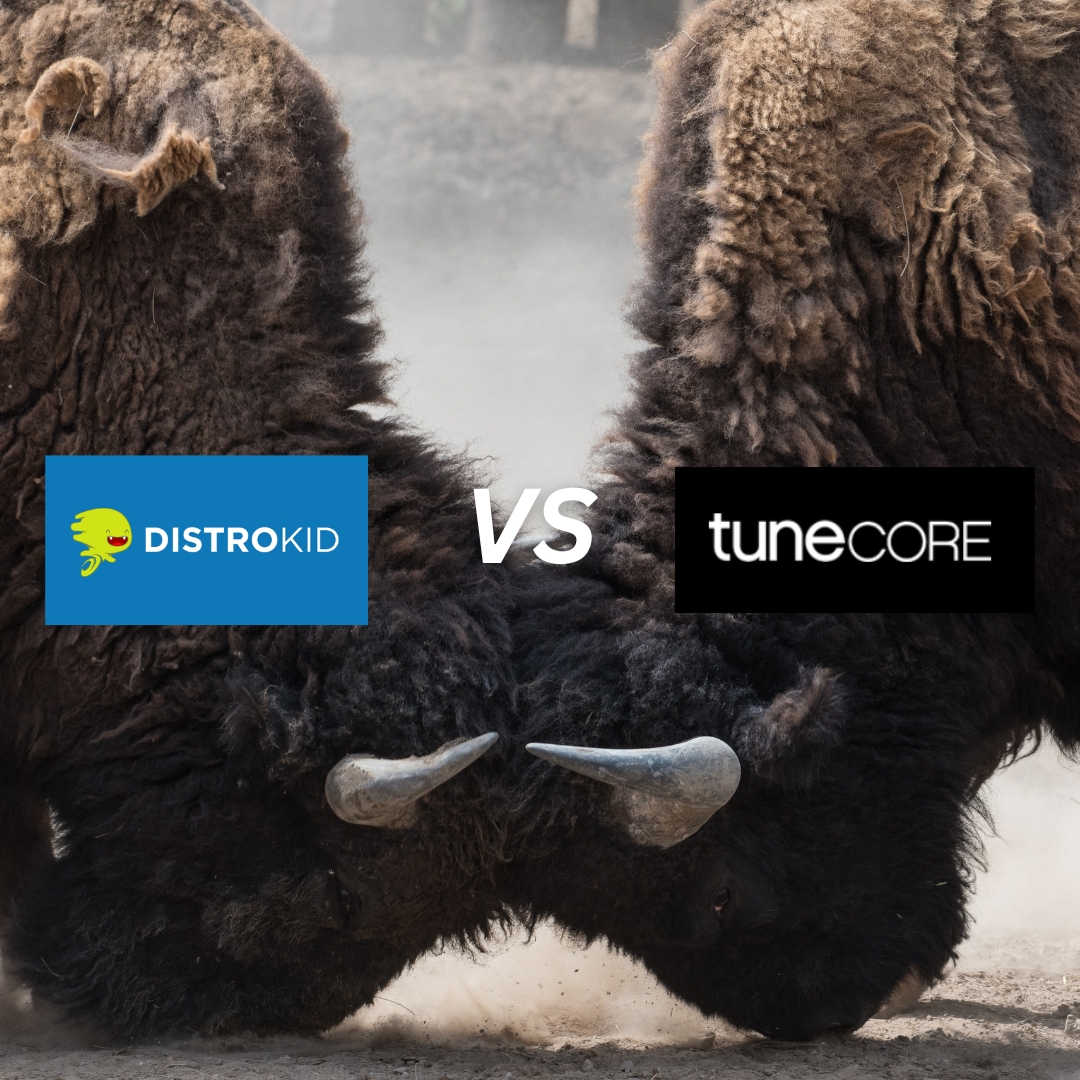If you’re reading this, you’re probably wondering whether you should choose DistroKid or TuneCore for music distribution.
Here’s my bottom-line answer that you probably won’t like:
Just pick one. It really doesn’t matter all that much.
Yeah, there are minor differences between the two services, but let’s be real – they’re minor. Will an extra $5 / year really make or break your music career? Will getting into 20 additional super-obscure music stores really drive more streams and sales? Will releasing music one day faster define your success?
The answer to these and similar questions, in almost every case, is no.
With that in mind, here’s what I’ll say:
- If you’re already using one of these platforms and you’re considering switching to the other, stop. It’s easiest to stick with what you’ve got. Now get back to making music.
- If you’re picking a brand new distributor and have deliberated between these two services for more than an hour, flip a coin and go with the winner. Now get back to making music.
- If you’re annoyed with the two bullet points above and want me to actually compare these two services, fine. Keep reading. But as soon as you’re done, get back to making music.
Okay, I’m off of the soapbox now.
Last thing I’ll say before this intro gets out of hand – I’m personally a DistroKid user, so the links I’ve included for them will a) give you 7.5% off and b) give me a couple of bucks if you end up going with them. But I’ve worked on releases with a bunch of artists using TuneCore, so I think I have a pretty fair perspective.
Here’s the link to check out DistroKid, and here’s the link to check out TuneCore.
With all of that out of the way, here’s a more detailed breakdown of these two options, presented with the hope that you’ll pick one and get back working on what really matters: your music.
A quick comparison
Let’s start with a table, because that’s probably the best way to give you the info all at once.
| DistroKid | TuneCore | |
|---|---|---|
 | ||
| Pricing (Entry-Level) | 22.99 / year | 19.99 / year |
| Do They Take Your Royalties | Nope | Nope |
| Speed | 2-5 days | 6-8 days |
| Instagram and TikTok | Of course | Of course |
| Total # of Stores | 150+ | 150+ |
| YouTube Content ID | +4.95 per song | Included in annual plan |
| Royalty Splits | Yes | Yes |
| Customer Support | Automated / hard to reach | Personal / pretty responsive |
| Distribute Lyrics | Yes | Yes |
| VEVO Video Distribution | +99 / year | Not available |
| Mastering Service | Included in annual plan | Coupons for partners |
| Just pick one already… | Try DistroKid here. | Try TuneCore here. |
If I had to sum things up, I’d say that DistroKid tends to be faster and offers a broader feature set (although they’ll nickel and dime you for almost everything). TuneCore is slightly cheaper and has, in my experience, slightly better customer support, but is slower to get your music out and doesn’t have quite as broad a feature set.
But that’s the high-level. If you’re still waffling or just generally confused, you probably want a more detailed explanation. I’ll oblige.
Let’s back up a little bit so we can jump in deeper.
What is music distribution?
No worries if you’re unsure on this; if you haven’t released music before or if you made music a few decades ago and are just getting back to it, you’d have no reason to know the term “music distribution.” But the concept is simple: Music distribution is the process of putting your music into stores (most of which are now online).
Music distributors are services that help you to put music out into the world.
The background on music distributors
The OG in this space was CD Baby. They’re actually the first music distribution service that I used, back when I was in high school what feels like 97 years ago. They operated (and still operate) on a pay-per-release model: You pay $9.99 to put a single or album out, and then the music stays out there forever.
It’s a nice model if you’re not releasing music often. Say you put out an album every two years, for example; you’ll pay something similar to DistroKid’s current fee, and you won’t have to worry about your subscription expiring and your catalog coming down.
But in the days of streaming, I think the pay-per-release model is a little outdated. Consistency in releasing music is the name of the game. Most artists that are seriously building a fanbase are releasing 8-10+ songs per year, with at least 4 of those being singles. If you pay for each release, that gets pricey pretty fast.
Which is why DistroKid blew up.
DistroKid was one of the first companies to offer unlimited releases under an annual payment plan. Instead of paying $9.99 to put out 10 singles, you can put out all 10 for $ 22.99. This pricing model was a game-changer, and it’s what compelled me to switch to DistroKid a few years ago.
For awhile, TuneCore ignored this new model.
They were kind of a second-player to CD Baby, and they mimicked that old pricing model: They charged per release, but they actually made things even worse by charging a yearly renewal fee for each release on top of that. In other words, if you put out an album, you’d pay 49.99 for it every single year. Ridiculous, right?
In fact, if you read DistroKid’s (now outdated) article comparing the two platforms, you’ll see that DistroKid picks apart that old pricing structure with a graph that’s really compelling.

I honestly can’t believe TuneCore was able to build a business on this model; in a world where CD Baby was putting up music forever for $9.99, it seems outrageously expensive.
But, fortunately, in 2022 they realized their mistake (or just decided they’d had enough of DistroKid flaunting its costs advantages), and they made a huge pivot to undercut DistroKid. Now, they offer unlimited releases for 19.99 per year.
We have an article that compares some of the top music distribution services, and I’d always ranked TuneCore pretty low on the list because of their lame pricing model. But when they launched their new pricing, they reached out to us asking if we’d update the post ha. I did… I ended up bumping them up from like 5th or 6th to 2nd overall.

⬆️ I found that email pretty funny for being so market-y and hyperbolic.
By the way, you probably noticed that Lauren’s email states a flat annual fee of $14.99/year. As of 2024, this is no longer the case, as their fee went up to $19.99. Still pretty affordable, especially since most distributors increased their fees in recent years, but a 20% increase nonetheless.
TuneCore claims to have “transformed the music landscape once again,” but in my opinion, all they were doing was undercutting one of their top competitors. They didn’t transform the landscape – they just put DistroKid on blast.
The question you’re probably wondering is: Did it work?
Why you should go with TuneCore
In my view, yeah it kind of did work. As I mentioned a few paragraphs above, I’m a DistroKid user, myself. But, truthfully, if I were starting from scratch, I’d probably go with TuneCore at this point, for the sole reason that at $19.99, they’re cheaper. And I’m a cheapskate.
Aside from free distribution services (most of which take a percentage of your royalties), this is as cost-efficient as you can get.
And while there are a few extra bells and whistles that come with DistroKid, for most artists, I think that you can get most of what you need with TuneCore’s basic plan.
A few notable pros of TuneCore
- $19.99 for unlimited releases is really cheap
- They have a free plan that lets you release only to social platforms (i.e., TikTok and Instagram)
- You get a free YouTube Content ID with each release so you can collect YouTube royalties when your music is featured in other videos (DistroKid charges for this)
- They promise customer service response within 3 business days (DistroKid has taken up to a week to get back to me)
- They verify you on YouTube and Spotify (DistroKid – and pretty much everyone else – does this, too, but hey it’s still nice)
All good stuff. Here’s the link if you want to check it out for yourself.
Why you should go with DistroKid
So, in the wake of TuneCore’s big pricing update, is there any reason you should still choose DistroKid?
First of all, I’ll say this: If you’re currently using DistroKid and you’re considering switching to TuneCore to save a few bucks per year, stop it. My personal advice is to stick with DistroKid. Yes, you can switch distributors (Ari Herstand has a good article on how to do this), but it takes time and it doesn’t always go as smoothly as you’d hope. If you value your time at more than $5 / hour, then stop worrying about TuneCore’s marketing hype, buy one less mocha latte, and just keep making music.
Second, here’s my more general answer: Yeah, absolutely, there are still reasons to choose DistroKid.
In my opinion, the biggest reason to go with them is speed. DistroKid is wicked fast at getting your music to stores – we’re talking 48 hours. If you’re on a tight release schedule, the difference between two days and one week can feel huge.
But there are also a few bells and whistles that DistroKid offers:
- They have a service to distribute your music video to VEVO. It’s expensive (99.99 per year) but it might make you feel legit (and TuneCore doesn’t have this)
- They have a built-in mastering service included in your annual plan (also something Tunecore doesn’t have)
- They offer some nice marketing tools, like Hyperfollow (a free landing page), a video generator, and pitching to their genre-based playlists
- I like their brand better (what even is their mascot? Not sure but it’s cool)
- And again they’re really fast (they claim to be 10-20x faster than any other distributor – I don’t know if that’s true but they are definitely quick)
Again, I’m a DistroKid user, so if you want even more detail on this stuff, I’ve actually got a review where I unpack even more pros and cons. You can read that here.
But the long and short of it is that if speed, extra marketing stuff, or a cool mascot matters to you, DistroKid’s a good call. Here’s the link to check them out.
Last thing: Can you use both DistroKid and TuneCore?
I’ve had a few people ask me this, so I figure it’s worth addressing.
Yes, you can use both DistroKid and TuneCore – but you should only do that for separate releases. In other words, you can’t release the same single on both platforms, but you could put out one single on DistroKid, then put out an album on TuneCore, and have both of those releases live on your various profiles. Nothing’s stopping you.
Also, as I mentioned before, you can switch your catalog from one distributor to another.
But barring some huge, unforeseeable upheaval, I don’t really know why you’d want to do any of that. My philosophy is to keep things simple. Pick one distributor and go with that.
Final thoughts on DistroKid and TuneCore
If you’ve read this far, thanks – I hope this comparison has been helpful. And if you’ve just skimmed to see some final takeaway, no worries, and here it is for the last time:
If you care most about cost, TuneCore’s a bit cheaper. If you want speed and marketing bells and whistles, DistroKid does a little better with that.
But the main thing, as I’ve been repeating ad nauseam, is just to pick one. Both distribution services are solid options. Choose DistroKid or TuneCore, then get back to the stuff that matters most – your music.
Good luck!








